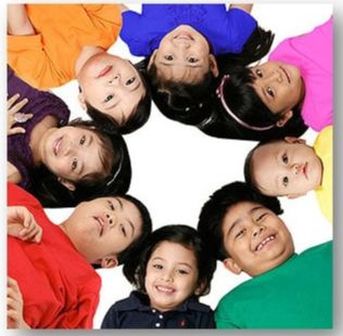 Learning a second language has proven to be very beneficial for children. As a childcare professional, you can provide opportunities for children to expand their cultural awareness and improve their cognitive development by teaching them another language. Whether through song, dance, counting, etc; no matter which method you choose, you will be creating an environment that encourages children to explore diversity. Below are some questions and answers that may be helpful for you as a childcare professional to implement Spanish in the Early Childhood Classroom. Question: Is it true that bilingual children begin speaking later than children that speak one language? Answer: This is an interesting observation and I hope I can help to answer your question. I cannot say definitively whether this is common or just a coincidence. I think it’s important to consider language acquisition and the speaker’s native language versus second language. Think about the time and effort needed to feel confident enough to speak your native language to others who don’t also speak it. Also, consider how it might feel to speak a new language when you are not confident quite yet. Children are very social and will communicate in many ways, even with a language barrier, but children learning a second language could possibly take a bit longer for several reasons. This also isn’t considered typical or atypical. Consider the individual and document your observations and communicate with parents as well. Question: How can I get parents involved in learning a second language? Answer: You can send home a newsletter or worksheets stating the words that you are working on. Depending upon the ages of your students I would also consider doing something more involved. Ask them to go home and teach one family member a new word in Spanish. Ask children to interview parents or other family members about their foreign language abilities. There are many options that can extend this even further. Question: How and when is a good time to start integrating Spanish into our curriculum? Answer: Many Early Childhood Educators begin introducing Spanish to young children during calendar time or circle time. They often combine Spanish and English and continue to build on known words throughout the school year. Another option is to begin with greetings or departures. Use the same phrase in Spanish to greet the children each day either when they come to the center or join circle time. In addition to these suggestions you may find that songs in Spanish are a great tool for teaching the language. For example singing the Spanish version of Twinkle Twinkle Little Star is a fun version of the song that gets children learning new words in a new language! The important thing to remember when introducing a new language to young children is to keep building more and more, and to stay consistent in practicing acquired words and adding new ones to your lessons. For more information on Spanish in the Early Childhood Classroom, register for our one hour course: https://www.cdastars.com/store/p254/Spanish_in_the_Early_Childhood_Classroom.html Have information to share? Please use the comments section below...
1 Comment
|
Blog Author
Archives
January 2018
Categories
All
|
Successful Solutions Training in Child Development
Enrollment HoursMonday - Friday 7 am – 8 pm
Saturday & Sunday 9 am – 8 pm Holidays 9 am – 8 pm |
Telephone(360) 602-0960
|
info@mycdaclass.com
|
Registrations that are submitted after enrollment hours will be processed the next morning. You will receive an email with your log-in information to access the course within an hour after we open the next business day.
 RSS Feed
RSS Feed

